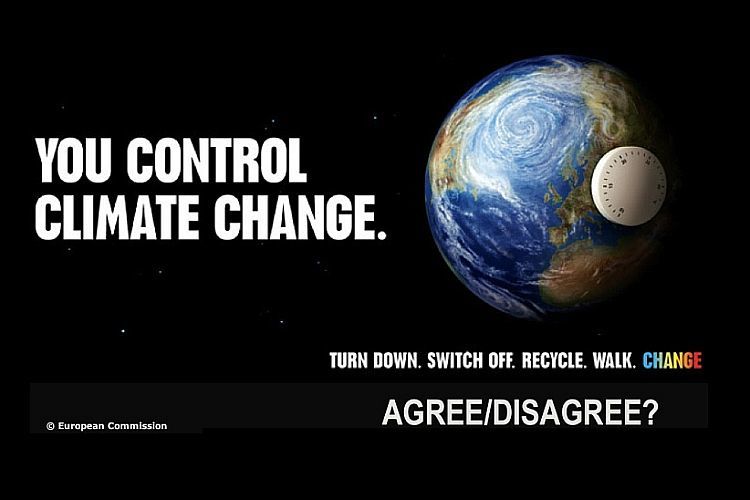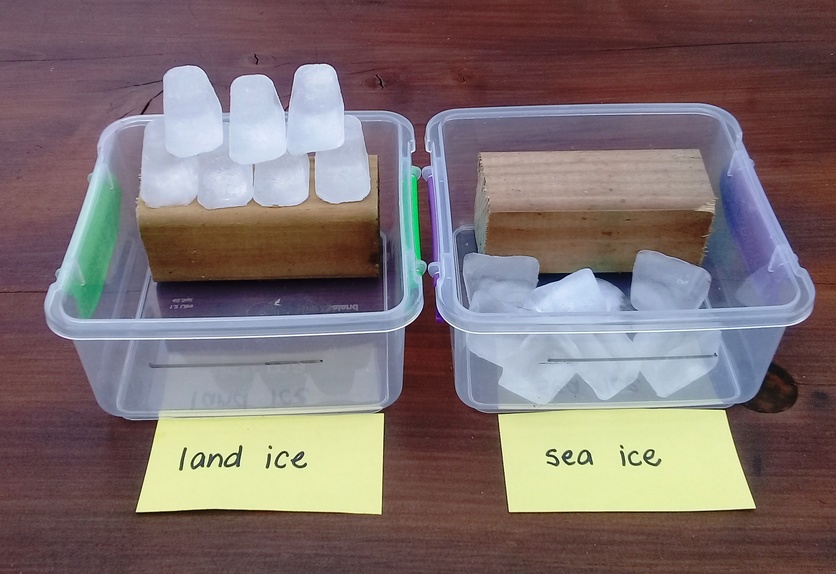Climate change is one of the world’s big issues. It is also a big topic to tackle in the classroom. The Hub’s planning pathways interactive suggests ways in which climate change can be broken down into smaller, more manageable themes or investigations.
Teaching in context
Climate change – as a wicked problem – can form a rich, real-life context for developing students’ thinking, visioning and problem-solving skills, action competence and an array of key competencies.
It allows students to explore:
- numerous science concepts – interacting systems, changes of matter, atmospheric chemistry and ecological impacts
- socio-scientific issues and cross-curricular connections – using science knowledge to influence decision making
- nature of science – collecting and interpreting data, using and examining evidence, using models and engaging in science-related issues.
Interactive planning pathways
Teachers can use Hub resources as starting points for context-based learning. The planning map below provides a gateway to collections of articles, multimedia, student activities and stories of New Zealand’s science research. By using a combination of these resources, teachers can combine conceptual understanding, capabilities development and assessment opportunities into relevant learning experiences.
To sort and annotate these resources for later reference, log in and use the Collections tool. A link to a sample collection is in the related content section at the end of this article.
New Zealand Curriculum information
Climate change is a broad topic that spans several aspects of the NZC.
Planet Earth and Beyond – interacting systems
- How natural features are changed and resources affected by natural events and human actions.
- Investigate the water cycle and its effect on climate, landforms and life.
- How heat from the Sun is distributed around the Earth systems.
- Interactions of the carbon cycle.
Living World – ecology
- How living things respond to environmental changes, both natural and human-induced.
- The impacts of natural events and human actions on a New Zealand ecosystem.
Material World – properties and changes of matter
- Observe the physical and chemical changes that occur when materials are heated or cooled.
Physical World – physical inquiry and physics concepts
- Explore forms of energy and energy transformations.
Nature of Science
- The use of evidence to support or refute existing ideas or claims.
- Evidence comes from a wide range of fields, reflecting the collaborative nature of research.
- Using models to describe and explain phenomena.
- Engage with texts and ask questions about their purposes.
- Consider issues of concern to students and make decisions about possible actions.
The article Thin Ice in the classroom has additional information on the links to the NZC vision and values statements.
Science capabilities
Climate change offers numerous opportunities to use and strengthen students’ science capabilities. The Hub’s science articles profile the work of scientists as they gather and interpret data and use this information to support claims about sea level rise, changes to land and sea ice, changes in atmospheric gas concentrations and more. The articles and activities have models, graphs and diagrams for students to unpack and interpret. There are also many opportunities to engage with science and take action.
This last aspect – the ability to get involved and take positive action – is an important way to support students to feel empowered and to steer them away for the overwhelming sense of doom and gloom that can accompany big issues like climate change.
Opportunities for assessment
Summative assessment opportunities using Hub resources:
- Discussion of diagrams and models to monitor student understanding of science concepts and correct use of scientific terms.
- Most of the student activities include written worksheets for the students to complete and provide snapshots of learning.
The Assessment Resource Bank has resources regarding the interpretation and use of text and diagrams and using evidence to inform opinions.
Professional development opportunities
The recorded PLD webinar Tackling planning in science uses climate change as the context to explore how teachers can plan science topics perceived to be difficult.
Resources in Lea Faka-Tonga
The article Ko e ha ‘a e feliuliuaki ‘a e ‘ea? is a brief introduction to the climate and how human influence is causing the climate to change. The activity Ko e feliuliuaki ‘a e ‘ea – ko e talanoa fakakoloa uses concept cartoons to encourage conversations about climate change.
Related content
The planning pathway featured in this article features a selection of resources on climate change. Explore the climate change topic for additional materials.
For a closer look at dairy farming, its impacts and its innovations to help reduce greenhouse gas emissions, check out Dairy farming and climate change – a context for learning. The interactive planning pathway in the article provides numerous starting points and resources to assist educators.
The level 3 Connected article Building for the future describes the impact climate change is having on a small Samoan village and how people are working together to build a safer future for the local villagers. Science and partnership with a Sāmoan village is a ready-to-use cross-curricular teaching resource that uses Building for the future as the starting point.
The level 4 Connected article Global action examines what global warming is and how computer modelling works and identifies how science may help New Zealand reduce its agricultural emissions.
Explore the environmental impacts in terms of CO2 of standard vehicles vs electric vehicles in The environmental footprint of electric versus fossil cars.
The impact of climate change is a factor in increasing pest threats to Aotearoa New Zealand’s biosecurity from a warming climate, explore this further in this article from The Conversation.
Monitoring Antarctic sea ice and the role that models play in prediction of ice melt and its consequences is crucial, explore more in this Conversation article.
The ClimateViz citizen science project needs help interpreting climate change graphics to help combat misinformation and support scientific communication.
Content curations
The Science Learning Hub team has curated collections of resources related to climate change and Our atmosphere and climate 2020. Login to make these collections part of your private collection, just click on the copy icon. You can then add additional content, notes and make other changes. Registering an account for the Science Learning Hubs is easy and free – sign up with your email address or Google account. Look for the Sign in button at the top of each page.
We have also curated a wide range of supporting resources in this Climate change Pinterest board.
Useful links
The Ministry of Education's Climate Change Learning Programme, is a level 4 programme focused on climate change that includes specific student activities; the wellbeing guide focuses on student wellbeing and hauora when navigating climate change as an area of learning and action. Many of the suggestions are relevant to other learning levels.
NZCER's Opportunities for education in a changing climate: Themes from key informant interviews includes recommendations for schools and kura. There are useful ideas for student engagement and action.
NIWA's key climate researchers and meteorologists in collaboration with teachers and students from a group of West Auckland intermediate schools have developed a set of lesson packages called Rangi. Rangi offers an engaging interactive way to learn about weather and climate in Aotearoa. This project was supported by MBIE’s Unlocking Curious Minds contestable fund.
The New Zealand scientist-led report On the Precipice: the climate change target humanity cannot afford to miss (44.48 MB) released in 2022, describes the potential impacts of Antarctic ice sheet melt, and rising sea levels and temperatures, resulting from climate change. It details the stages and potential impacts of the changes and provides evidence of potential impacts by way of data and modelling. This was a collaborative effort between GNS, Te Herenga Waka—Victoria University of Wellington and the Antarctic Science Platform. It includes input from New Zealand and international researchers and support from the Intergovernmental Panel on Climate Change (IPCC).
The NZ SeaRise: Te Tai Pari O Aotearoa programme has released location specific sea level rise projections out to the year 2300 for every 2 km of the coast of Aotearoa New Zealand. This very informative site includes maps (you can find the possible impact on your local area) and there are resources such as posters and videos.
See NIWA’s Sea levels and sea-level rise – it has lots of information including: how sea levels are measured, what is contributing to rising sea levels, future rise projections and why we should worry.
Use NIWA's serious game Township Flood Challenge. The game engages people in strategic thinking about adaptation actions as a result of climate change and extreme weather. The game is supported by educational resources that support learning about climate change, adaptation choices, wellbeing, values and decision making.
The OECD commissioned the 2023 report Agency in the Anthropocene. This easy to read report, co-authored by Dr Chris Eames from the University of Waikato, explains the competencies youth need to address local and global challenges in this Anthropocene epoch of human influences on the planet.
In 2024 the Journal of the Royal Society of New Zealand released a special issue New Zealand and Antarctica in a changing climate with guest editors James Renwick CRSNZ, Rebecca Priestley CRSNZ, Bruce Glavovic and Darren King.



